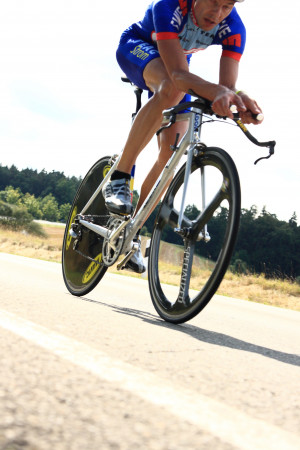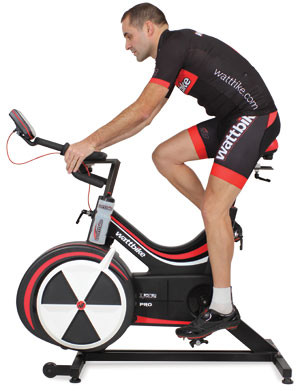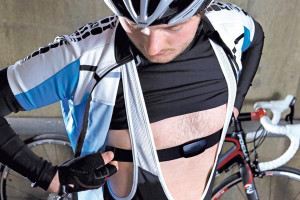
Despite it sounding like a term best left for serious cyclists, “Functional Threshold Power” (commonly referred to F.T.P) is actually far less complex than it sounds.
In summary, your Functional Threshold Power is the maximum amount of power (measured in watts) that you can maintain for 1 hour - although it can be worked out by performing a 20 minute test.
One you know your FTP, training can be made far more productive by riding at a certain percentage of this figure, thereby taking the guess work out of how hard you should be riding.

As simple as it sounds, there are obvious problems with finding out how many watts you can hold for an hour, with the most obvious one being - how do you get a watts reading when you’re on a bike?
In short there are two accurate methods at getting an accurate power output whilst riding and one more practical, though far less accurate, method.
Take a look at the three methods below and see which one is most practical for you.
Keep in mind that there is a degree of skill in performing an accurate FTP test, so it may need to be performed a few times before you get an accurate result.

If you are lucky enough to have access to a gym who have watt bikes, then you’re in luck.
Simply set it for an hour (or 20mins then subtract 5% from that figure) and see how many watts you can average over that time period.
You should find the final few minutes of this test very challenging, so get prepared for a sweaty workout.
For most people, undertaking a 60 minute FTP test is too much. Riding hard for a full hour is incredibly physically and mentally exhausting and an experience that most people would rather avoid. Unless you are already in very good shape, our suggestion is to undertake the 20 minute test and subtract 5% off your average wattage to get your FTP.
Tips

If you have the money, then you can buy pedals or wheels which give you a power output reading (in watts) on your road bike.
You won’t get a lot of change out of £750, but if you have the cash, a power meter is a great gadget to have for both the FTP test and for training / racing in general.
To perform an FTP test using a power meter, perform the same protocol as for the watt bike and find out your average watts during a 20 minute test (then minus 5% to get your FTP).
Find a flat road and see how you get on.
Tips

Although less accurate, a far more cost effective way of estimating your FTP is by performing a 20 minute test on a flat, good quality road and getting an average heart rate for the test.
Warm up for a good for 10-20 mins varying your cadence to wake the legs up, then ride for 20 minutes as hard as you can.
Your estimated FTP heart rate is the average you record over the 20 minute ride.
Tips

Once you know your FTP in watts or your FTP heart rate, you can use this data to work out how hard you should be pushing yourself in training.
Let’s say you’ve done your 20 minute FTP test and you’ve managed to get an average power output result of 180 watts with an average heart rate of 160bpm.
Your FTP can be worked out as follows:
Based on these figures, the following training session performed a couple of times a week is incredibly effective at improving your FTP:
If you have a heart rate monitor, you should find that your heart rate will (or should) be at about 90-95% of your average FTP Heart rate.
This is a challenging session, but not completely exhaustive.

There are a plethora of other workouts you can do based on your FTP, but now that you have a basic understanding of what it is, you are now far better placed to experiment with your training and try to improve your FTP over the next few months.
There is plenty of comprehensive training advice on FTP on the internet, particularly at the British Cycling Website or on the Watt bike website, so visit these sites for a lot more information and FTP calculators to help you with your training.

© 2015-2020 GH Training